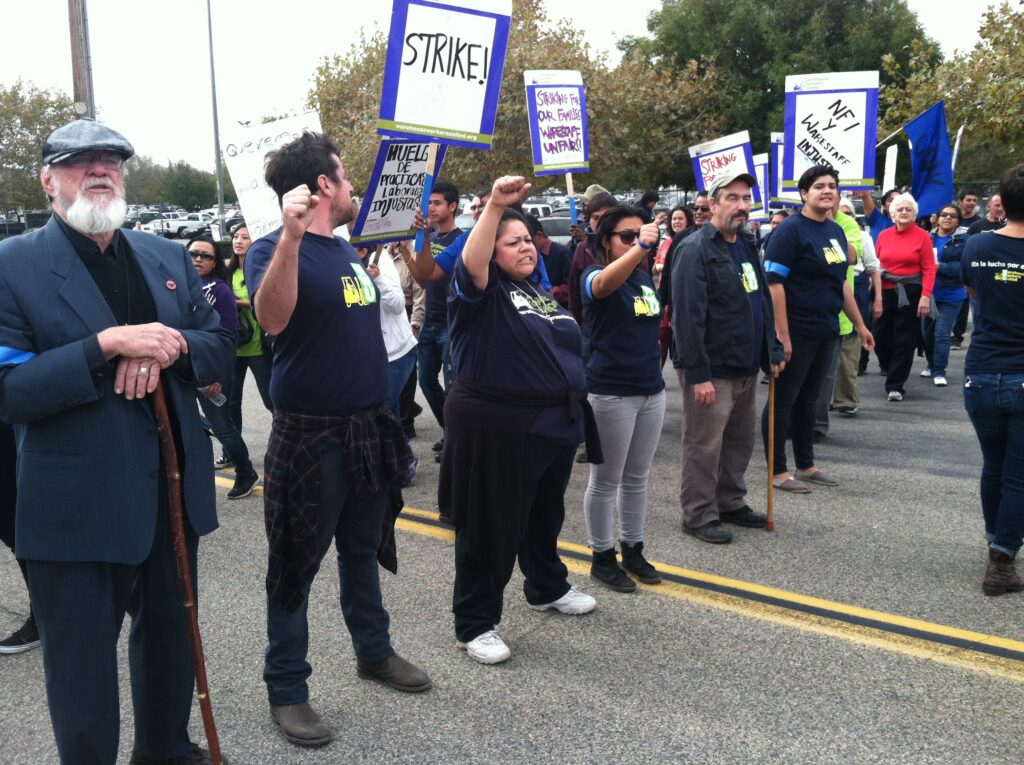Precarity and Deregulation in the Warehouse and on the Road

7.89% of workers covered by union contract
$30.32 median hourly wage (Source: Bureau of Labor Statistics 2023)
In this chapter, we look at workers employed in the distribution and logistics sectors of the food chain, covering the shift in warehouse and distribution labor patterns to temporary contracts, the takeover of retail by logistics in the case of e-commerce, the deregulation of the trucking industry, and, finally, the increase in gig work in the food delivery sector. In looking at these various sectors, we explore the historical shift from a “traditional” labor force, with workers tied to a specific company or brand as employer, to a highly disjointed industry, dependent on third-party employers, temporary hiring agencies, and independent contract work. We argue that this sector has been largely influenced by the global push toward neoliberal governance, which allows for deregulated and highly competitive workplaces, with disregard for workers’ rights, wages, benefits, health, and safety. This contributes to a precarious workforce, one in which the traditional lines of employer and employee are becoming increasingly blurred. This precarity, where workers live in a state of persistent economic insecurity, makes worker organizing challenging and in some instances impossible.
